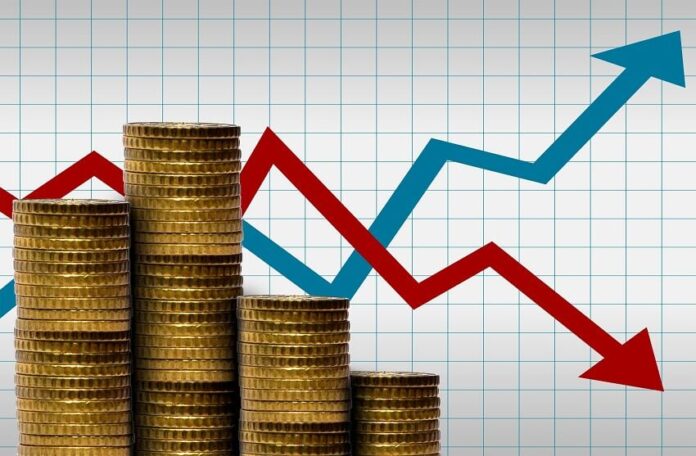In the following examples, we will use Fundamental Analysis that will help us to decide a buy or sell position for a currency pair.
Fundamental analysis will you say that? Don’t worry! We will discuss this in more detail in our next lectures.

EUR/USD
In this example, the EURO is a base currency, which means, we will take a buy or sell position on the currency pair on the basis of the euro.
If you believe, the U.S. Economy’s position will continue to fall, which was bad for the U.S. Dollar’s value, and you have decided to take a BUY entry, in EUR/USD currency pair.
By placing this order, you have bought Euro based on your analysis and wish the Euro will strengthen against the dollar.
On the other hand, if you think the U.S. economy is getting stronger, which is good for the dollar then you accepted a SELL entry in EUR/USD currency pair. By placing this order, based on your analysis, you have sold the euros and expecting to fall against the dollar.
USD/JPY
In this example, the U.S. Dollar is the base currency, which means you will take any Buy or Sell entry in the currency pair depending on the USD.
If you think the Japanese government will weaken their currency yen so that they have a good impact on export trade, you will place a Buy Order on the USD/JPY currency pair. By placing this order, you are expecting the dollar would strengthen against the yen.
On the other hand, if you think that Japanese investors are thinking of converting their dollar currencies from the US back against the yen, which is detrimental to the dollar’s value, you will order a Sell entry in USD/JPY currency pair. By placing this order, based on your analysis of the U.S. Dollar, you thought the dollar would weaken against the yen.
GBP/USD
In this example, Pound is the base currency, so, depending on the pound, you will take further Buy or Sell entry in the currency pair.
If you think the British economy will be in a better and stronger position than the American economy, which means that the pound’s value will be better than ever, you will take a Buy Order in GBP/USD currency pair.
On the other hand, you think the British economy is slowing down. On the other hand, the wheels of the American economy are doing very well if you assume the value of the pound will be worse against the dollar and you place a sell order on GBP/USD currency pair.
Margin Trading
When you go to a grocery store to buy some eggs, you are not just buying a single Eggs cause those are sold as dozens. That is, we can say that 12 pieces in a single “lot”.
In the case of forex trading, if you think you only sell 1 euro or buy, then we assume, you are foolish. This is usually the lot’s. For example, 1000 units are being Micro Lot, 10,000 units are in the Mini lot, and 100,000 units are in the Standard Lot. The size of this lot will depend entirely on your broker and your trading account (ex: mini account, micro account, standard account, etc.).
“But I don’t have enough money to buy 10,000 euros! Can I still trade?”
Of course you can! That’s what margin trading is.
Margin trading is an advantage whereby you can trade using borrowed money.
This margin trading allows you to trade $1,250 or $50,000 with a balance of just $25 or $1,000. Also, you get the advantage of making larger transactions with just a few balances. Isn’t it amazing? that is why Forex Trading is so much popular?
We will explain it further!
Read the following information very carefully! Otherwise, you will not understand what happened.
- Suppose you think the British pound will be stronger against the dollar.
- You have taken a Buy entry in (GBP/USD) with a 2% margin, from a standard lot (100,000 units) broker and waited for when the market would start to run upwards. When you buy 1 lot (100,000 units) of GBP/USD currency pair, that means you actually bought 100,000 pounds directly, which is equivalent to 150,000 dollars (100,000 units of GBP * 1.50000). If your margin level for this trade is 2%, only $3,000 will be charged from your balance ($150,000 * 2%) to open this trade. which means, you are now controlling 100,000 GBP with just 3,000 USD. We will discuss this margin in more detail in our next lectures, but hopefully, you have some general idea about this margin and how it works!
- The idea that you pre-ordered the GBP/USD currency pair was successful and you closed your position at 1.50500 prices. At the end of the trade, your profit is $500.
| Your Actions | GBP | USD |
| You buy 100,000 pounds at the exchange rate of 1.5000 | +100,000 | -150,000 |
| You blink for two seconds and the GBP/USD exchange rate rises to 1.5050 and you sell. | -100,000 | +150,500 |
| You have earned a profit of $500. | 0 | +500 |
Whenever you close your position, any amount that deducts from your balance to open a trade (ex $3000) is returned to your balance with your profit. As a result, after closing the trade, your balance is $3000 + $500 = $3500
Retail Forex Broker, gives you the option to trade in many lots which is the biggest advantage of such a broker. You can define this lot as you like.
That is, it is not just that you need to trade with a specific unit, such as 1 or 5 or 4, 5. If you think, 12350, this number is good for you! Then you can start trading even by setting this amount of units.
Rollover
This is a term where the broker will give you interest or charge you for your running trade at the end of their trading day (5pm daily in Bangladesh). It depends entirely on your margin and entry position.
If you are not interested in getting any interest from any trade, then close any trade, Bangladesh time before 9pm or open a swap / free account.
Rollover charges / interest is a part of forex trading, as there is a debt / debt or margin involved in trading each currency pair.
- If the interest rate of the base currency is higher than the quote currency’s interest rate and if you accept the BUY entry then you will get the interest. On the other hand,
- If the interest rate of the base currency is higher than the quote currency’s interest rate and if you accept the SELL entry then you will be charged interest.
Below is a list of the current interest rates of some currencies. This driver is correct until February 2017.
Interest Rates
| Country | Currency | Interest Rate |
|---|---|---|
| United States | USD | < 1.75% |
| Eurozone | EUR | 0.00% |
| United Kingdom | GBP | 0.75% |
| Japan | JPY | -0.10% |
| Canada | CAD | 1.75% |
| Australia | AUD | 0.75% |
| New Zealand | NZD | 1.00% |
| Switzerland | CHF | -0.75% |
Later on, we’ll teach you all about how you can use interest rate differentials to your advantage.
If this article seems useful to your then please click the like button below. You can also share your valuable feedback or ask questions in the below comment section. Also, subscribe to our newsletter for trading-related updates.













